




We talked about the dual-chamber air suspension last time. In this article, we will introduce active roll control (ARC), an emerging chassis electronic control product. In the international market, ARC is mainly used in high-end passenger cars that emphasize handling performance, such as Audi SQ7/SQ8, Touareg, Lotus Eletre/Emeya, BMW X5/X6/X7, Porsche Cayenne/Panamera, and Bentayga. We will explain its benefits from the perspective of comfort, maneuvering, and safety.
ARC is evolved from the traditional anti-roll bar. As we all know, excessive car shaking or swinging in the left, right, forward, or backward directions makes the driver and passengers uncomfortable. Serious car rolling (e.g., a sharp turn at high speed) may trigger the car to roll outward, resulting in casualties.
The anti-roll bar is designed to resist roll. It is a transverse, resilient torsion bar. One is equipped on the front axle and another one on the rear axle. In a top view, an anti-roll bar is a U shape that has been stretched horizontally, with the opening either in the direction of driving or the opposite direction of driving. The left and right rocker arms of the anti-roll bar are fixed to the suspension, and the middle horizontal bar is fixed to the frame through a rotatable bushing.
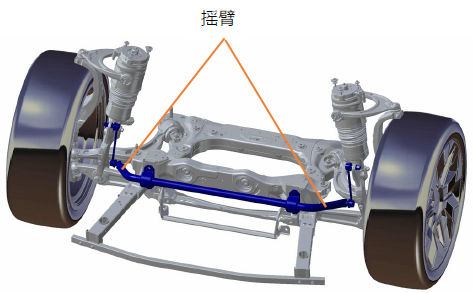
anti-roll bar
When the car is cornering at high speed, the centrifugal force will tilt it outward (roll), the outer rocker arm of the anti-roll bar will be pressed downward, and the torque generated will be transmitted to the inner rocker arm, which will pull the inner car body downward, so as to reduce the amplitude of the outward tilt. This is the principle of the anti-roll bar. However, as the undulations of the road surface impact one side of the car wheel and body, the torque generated on that side will also be transmitted to the wheel and body on the other side, causing discomfort to the driver and passengers. Therefore, the anti-roll bar cannot meet two contradictory requirements: effective roll resistance and comfort. To solve this problem, ARC was born. One ARC system is equipped on the front axle and another one on the rear axle. Each system has sensor, controller, and actuator consisting of drive motor and reduction device that allows the left and right rocker arms to rotate in reverse direction when the motor is driven (side view of the car).
See below for the ARC system structure and its position on the chassis:
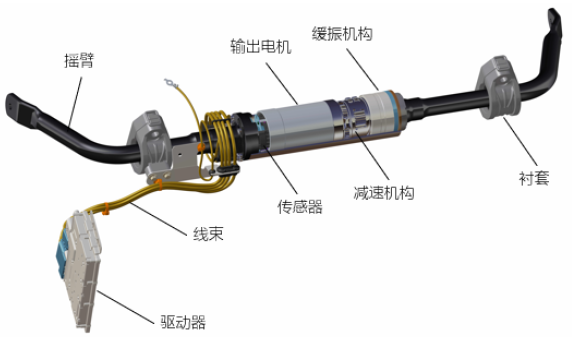
ARC system structure
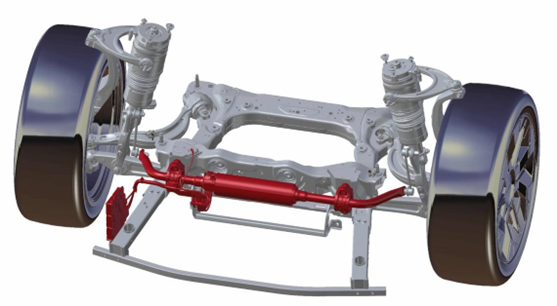
ARC system on the chassis
Let's take a look at the principle of ARC. When the car is driving in a straight line, there is no power signal to the motor; ARC can disconnect the left and the right, and the left and right wheels can move independently. At this time, the road impact on one side will not be transmitted to the other side, which can avoid derivative impact and ensure driving comfort. When the vehicle is cornering, there are two scenarios: the steering wheel is turning (transient state) and the steering wheel is stationary (steady state). When the steering wheel is turning, based on signals (e.g., steering wheel angle, car speed, lateral acceleration, and yaw angle speed), the motor controls the car tilt by driving the reverse twist of both ends of ARC so that the car remains horizontal (and can even roll inward in an anti-centrifugal way). When the steering wheel is stationary but the car is still cornering, the motor and the reduction device lock ARC as one so that the car can keep the current position until cornering is completed. After the wheels return to the central position, ARC goes back to the state that no power signal is given to the motor. The following table explains typical scenarios for ARC:
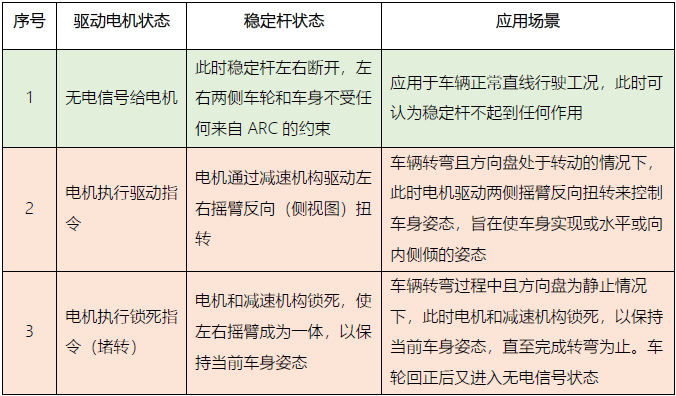
the principle of ARC
In summary, the overall performance of the ARC system is far superior to the anti-roll bar in terms of controlling the car position, reducing the impact from the road, etc.
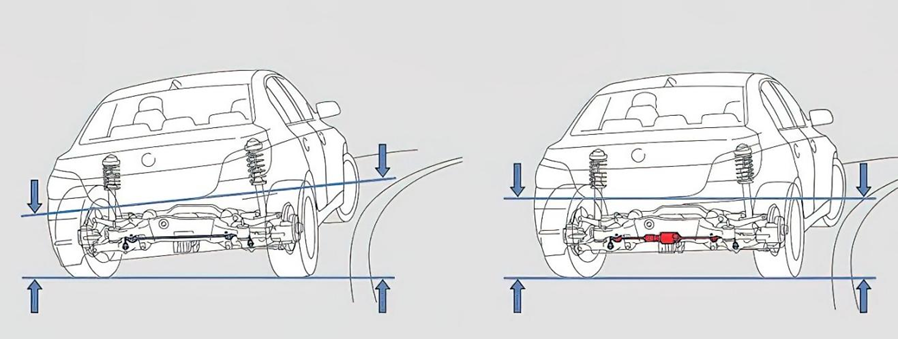
comparison of the anti-rolling effect between anti-roll bar and ARC
In addition, the ARC system brings many practical and cool functions. For example, lowering one side of the car to make people's access easier. If the car is trapped in snow or muddy roads, shaking the car left and right may solve the problem. If the car is about to be hit by another vehicle coming from one side at high speed, in order to avoid the door being directly hit and injuring people, ARC can quickly tilt the car to the other side so that the high-strength longitudinal beam under the door receives the impact, which protects people.
Since 2020, KHAT has been committed to the R&D and design verification of ARC systems and has received 1 invention patent and 6 utility model patents. As of the end of April 2024, KHAT's ARC has been nominated for 2 models by a leading Chinese OEM. With the vigorous development of China's smart electric vehicle industry, ARC will have a bright future.